Isfahan Music Museum: A Must-Visit for Music Lovers
Isfahan Music Museum is a labor of love, featuring a vast collection of national and folk instruments assembled by a private collector.
Isfahan, often called “Half of the World,” is not only famous for its stunning historical architecture but also for its deep cultural roots. Known as the heart of traditional Iranian music, Isfahan even had its own musical scale in ancient times.
Over the centuries, this city became a melting pot of various ethnicities and religions, which influenced its musical traditions. You’ll find a blend of Lori, Bakhtiari, Kerman, Bam, Qashqai nomadic music, as well as Armenian and Georgian instruments in the local music scene.
This vibrant musical culture is beautifully showcased in the Isfahan Music Museum, located in the Armenian Quarter of Jolfa.
Visitors can experience live performances by renowned musicians. For music enthusiasts or admirers of finely crafted instruments, the museum is a must-visit destination. Join us to explore the museum’s fascinating history, unique architecture, and its prime location in Isfahan!
History of the Isfahan Music Museum
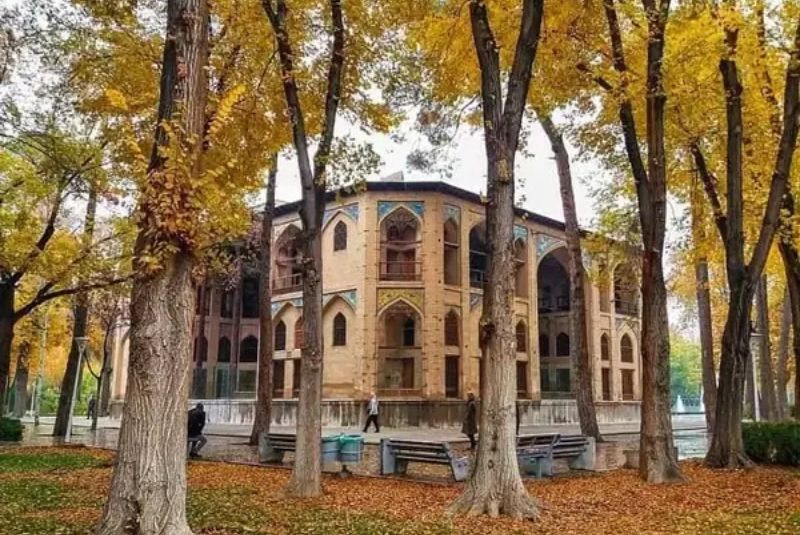
The Isfahan Music Museum holds the distinction of being the first and only private music museum in Iran. Established on December 2, 2015, by two passionate musicians, Mehrdad Jihouni and Shahryar Shekarani, the museum aims to introduce visitors to authentic Iranian music, local instruments, and their craftsmanship.
Originally located on Tohid Street, the museum found its permanent home in the beautiful Eight Paradise Park after a few years. This relocation has only enhanced its charm and accessibility for visitors.
Remarkably, just a year after its inception, the Isfahan Music Museum achieved significant recognition, earning the top rank in technical standards from the International Council of Museums in Iran and being named the best private museum in Iran by the country's Cultural Heritage and Tourism Organization.
In a short span, it has captured the attention of many, gaining popularity on various domestic and international platforms. Visitors consistently express their satisfaction with their experiences, making the Isfahan Music Museum a must-visit destination for music lovers and cultural enthusiasts alike.
Different Parts of the Isfahan Music Museum
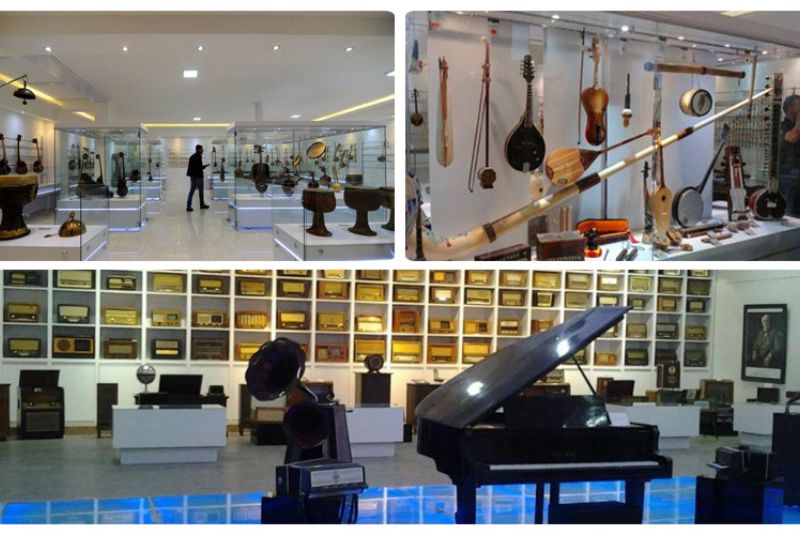
When you step into the Isfahan Music Museum, you're not just entering a building; you're diving into a vibrant world of sound and tradition. The museum boasts various sections, each showcasing unique aspects of Iranian music and culture. Let’s take a closer look at what awaits you!
National Instruments Hall
One of the highlights of the museum is the National Instruments Hall. This section is dedicated to introducing visitors, especially international tourists, to authentic Iranian instruments and their rich history.
Here, you’ll find an impressive collection of instruments, including the harp, qanun, rubab, tar, setar, ney, kamancheh, oud, ghichak, daf, and tonbak. These instruments are played across the country, transcending regional boundaries. Every piece is accompanied by bilingual descriptions in Persian and English, making it easy for everyone to appreciate the beauty and diversity of Iranian music.
Local Instruments Hall
Next up is the Local Instruments Hall, where you'll encounter a comprehensive showcase of regional musical styles and cultures. Instruments in this section are categorized by their regions of origin, featuring unique sounds like the benju, duduk, kuzah, dotar, sorna, karnah, dahl, dayereh, and even simple homemade instruments crafted from oil cans and wire.
As you explore, you'll hear fascinating stories, such as how Turkmen musicians play the ghichak while riding horses or the significance of the Adam and Eve instrument played at weddings—two pipes that produce sound only together. This hall also highlights historical events tied to these instruments, like the start of the Iran-Rome war, celebrated with the sound of the karnah.
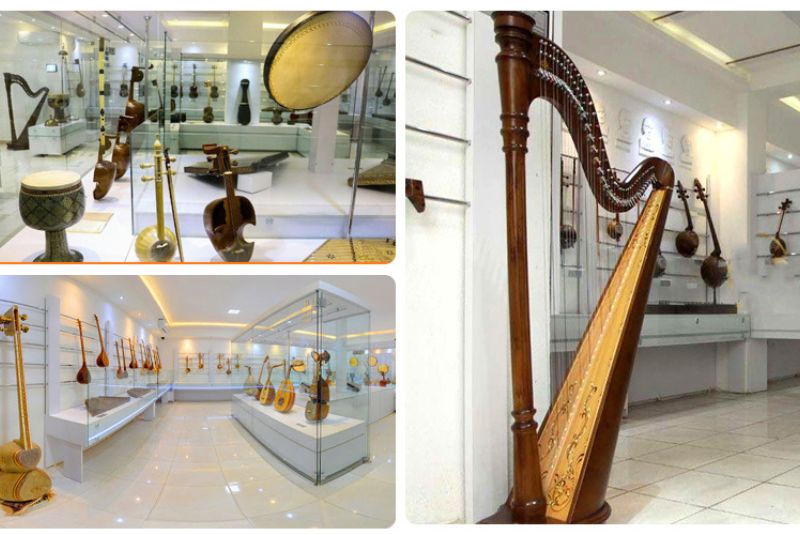
Passage of Masters
To honor the legendary figures in Iranian music, the museum features the Passage of Masters. Here, visitors can learn about the lives and invaluable contributions of artists throughout history. This section serves as a tribute to those who have shaped the sound of Iran, making it a poignant stop for music enthusiasts.
Sol Hall
The Sol Hall or Music Hall is a unique space where live traditional music performances take place. This part of the museum invites music lovers to enjoy captivating renditions of various pieces, allowing them to experience the enchanting resonance of instruments firsthand.
Instrument-Making Workshop
For those interested in the craftsmanship behind these instruments, the Instrument-Making Workshop is a must-visit. Here, you’ll discover how traditional Iranian instruments are made, learning about the wood types and materials used. It’s an educational delight for anyone passionate about authentic music.
Café and Store
Finally, don’t miss the Café and Store within the museum complex. Here, you can unwind with a cup of coffee while browsing through a selection of musical instruments, handmade crafts, and CDs featuring talented musicians. It's the perfect spot to relax and take a piece of Isfahan's musical heritage home with you.
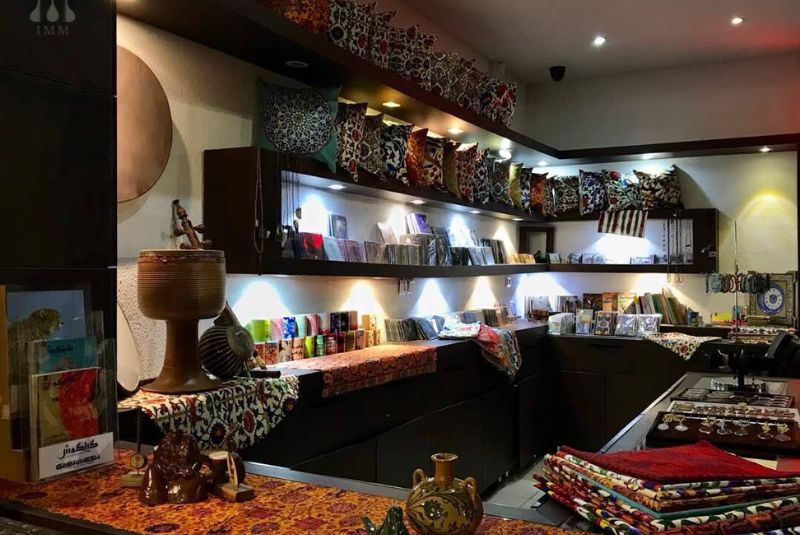
Instruments of the Isfahan Music Museum
As you wander through the Isfahan Music Museum exhibits, you'll encounter a stunning array of traditional instruments, each with its own story and unique sound. Here are some of the most iconic instruments showcased in this captivating museum.
1. Qanun (قانون)

The Qanun is a stunning trapezoidal string instrument known for its distinctive sound. With 81 strings grouped in sets of three, two, and single, it's typically made from walnut wood.
The musician plays it on their lap, plucking the strings with the index fingers. The skin covering is often made from animal hides, lending a unique resonance to its sound. Historically, the Qanun is believed to have been invented by the great Persian scholar and musician, Al-Farabi.
2. Ghichak (قیچک)
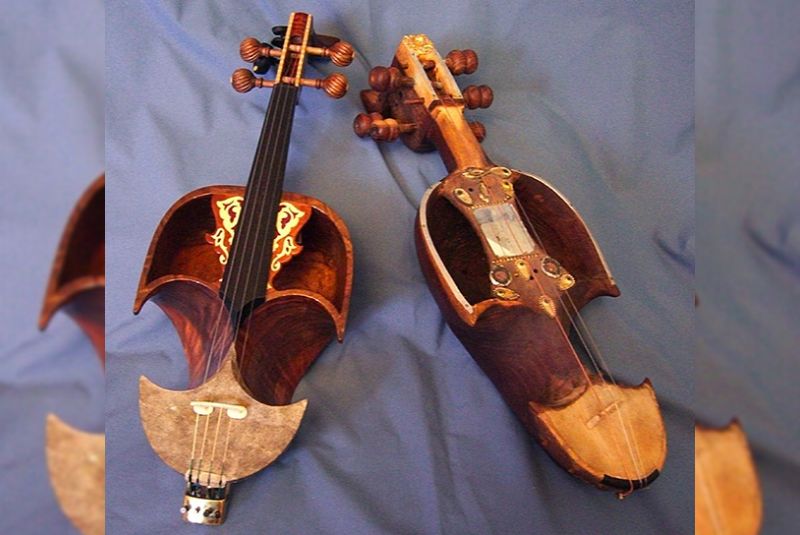
Next up is the Ghichak, a traditional string instrument played with a bow, similar to the Kamancheh. Popular in southeastern Iran, particularly in Sistan and Baluchestan, this unique instrument was once crafted from horse skulls, giving it a distinct look. Its body is made from walnut or mulberry wood, and it produces a deep, rich sound with its metal strings.
3. Harp (چنگ)
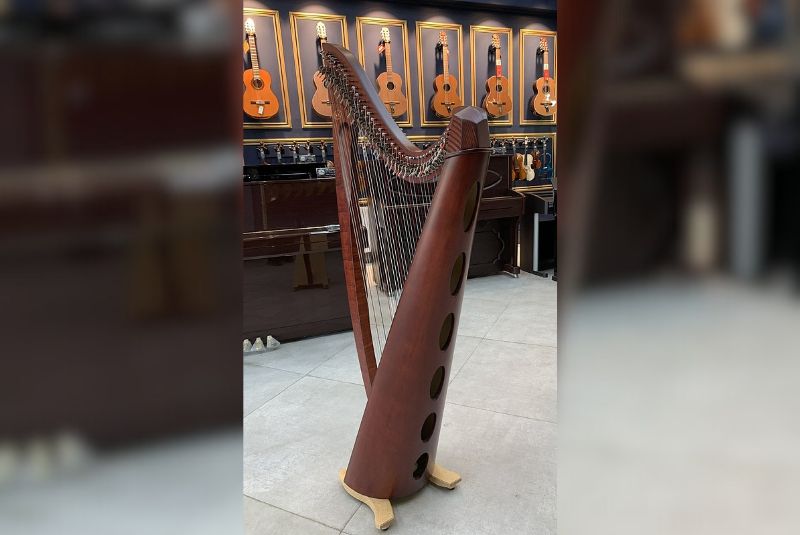
The ancient Harp is a gem in Persian music, with roots tracing back to the Elamite civilization over four thousand years ago. Crafted from walnut and maple wood, this string instrument is played using finger techniques. Notably, Iranian musicians often use a ten-finger technique to produce intricate melodies, setting it apart from other global harp-playing methods.
4. Tar (تار)
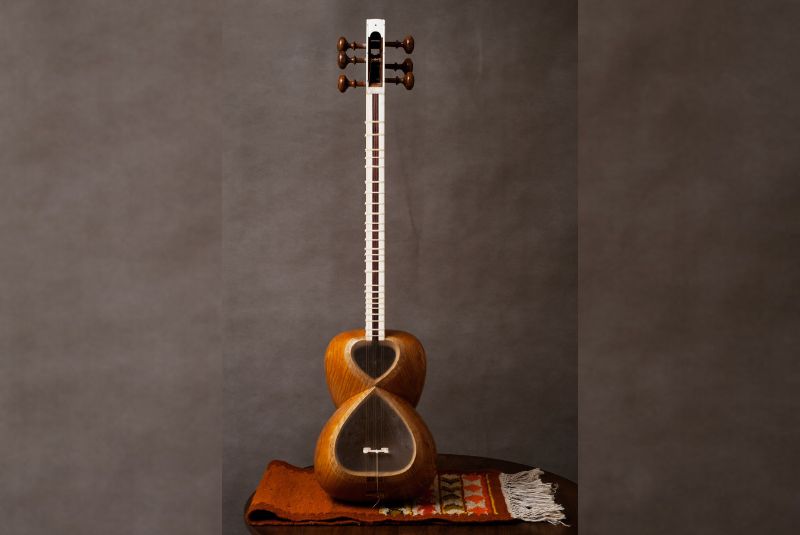
No discussion of Iranian music is complete without the Tar. This beloved string instrument is often considered the ancestor of modern guitars. Made from aged mulberry wood, it features strings made from sheep gut, allowing it to produce a warm, vibrant sound. Its unique construction and transparency, thanks to the use of lamb skin, give the Tar its distinct tonal quality.
5. Robab (رباب)
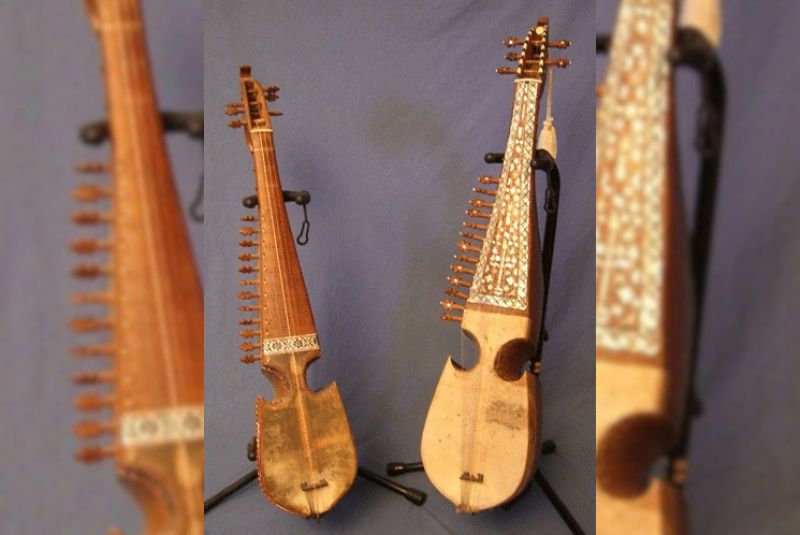
The Robab is one of the oldest string instruments, primarily heard in eastern and southeastern Iran. Known for its melodic capabilities, it has become a staple in Iranian orchestras. Made from wood, skin, and nylon strings, the Robab offers a rich sound that resonates with the heart.
6. Barbat (بربط)
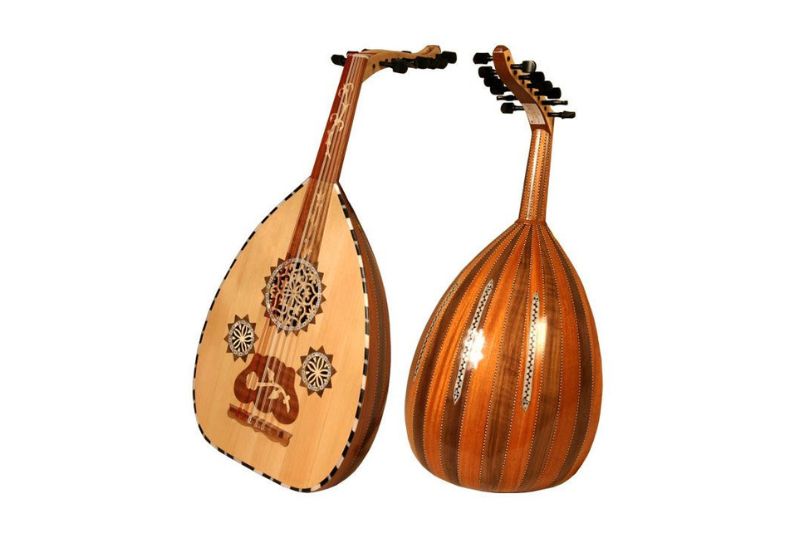
The Barbat, also known as the oud, holds a special place in Iranian musical history. Its pear-shaped body, typically crafted from mulberry or occasionally other woods, creates a warm, rich tone. The Barbat is often associated with legendary musicians like Barbad, reflecting its deep roots in Persian music.
7. Ney (نی)
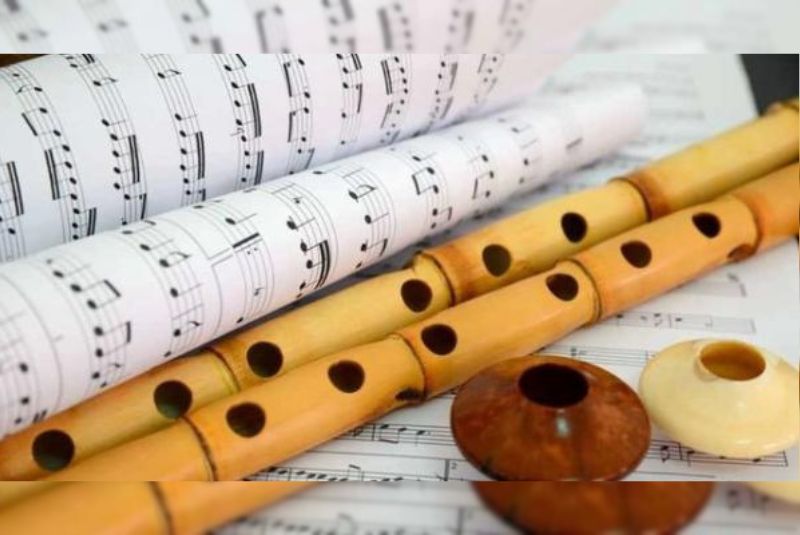
The Ney is a traditional wind instrument, celebrated for its hauntingly beautiful sound. Crafted from cane, it typically features five finger holes. The challenge in playing the Ney lies in producing its sound, making it a favorite among skilled musicians who appreciate its ethereal quality.
8. Daf (دف)
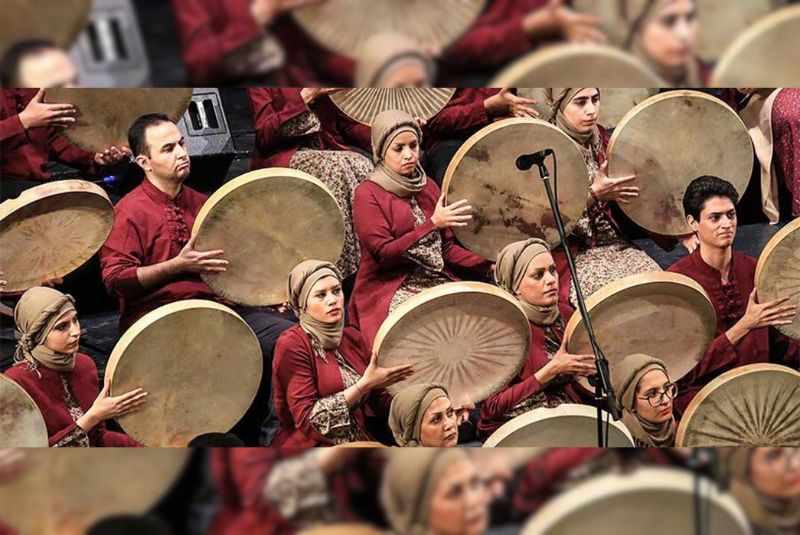
In the realm of percussion, the Daf stands out. This circular frame drum, covered with animal skin, resonates with a powerful beat. Its unique sound is enhanced by jingles made from metal, and it plays a significant role in both classical and mystical music throughout Iran.
9. Setar (سه تار)
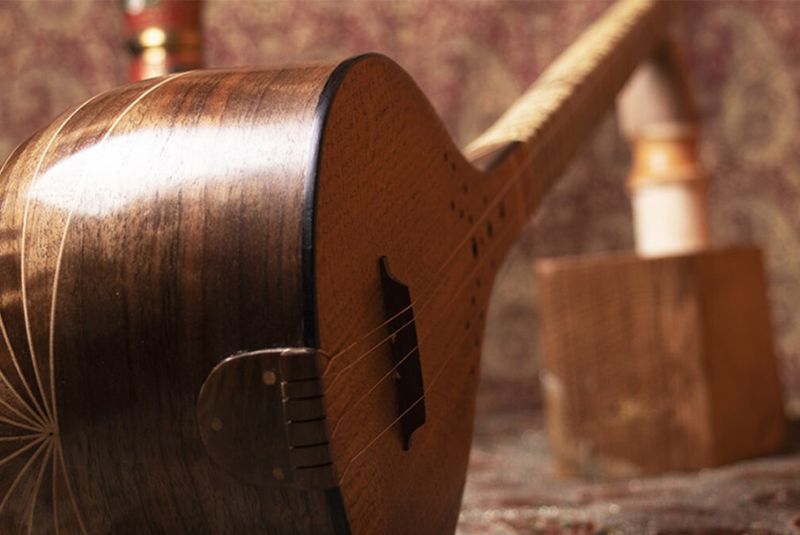
The Setar, known for its delicate sound, is another vital string instrument. Played sitting down, its pear-shaped body creates soft melodies ideal for solo performances. This instrument's subtlety allows musicians to express their emotions profoundly.
10. Kamancheh (کمانچه)
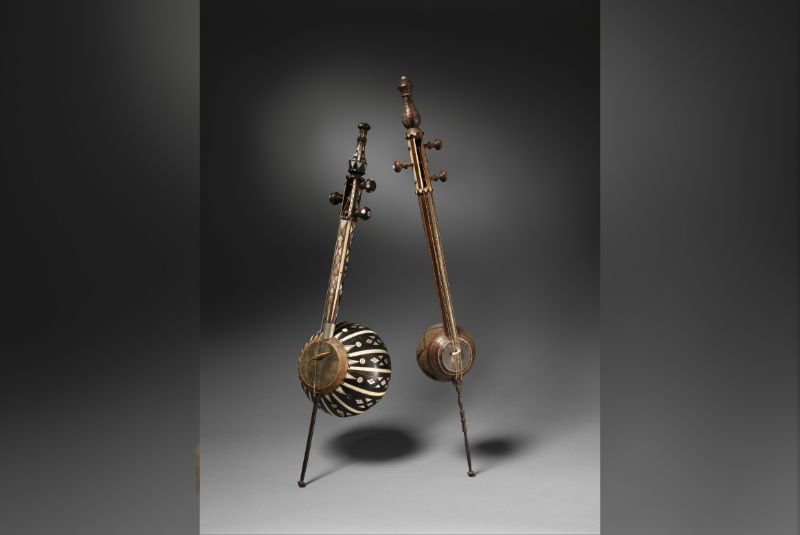
The Kamancheh is a bowed string instrument known for its expressive range. Made from wood, skin, and metal, it resembles the violin in some ways but has a unique sound that reflects Persian traditions. Renowned players like Kayhan Kalhor have popularized this instrument globally.
11. Tombak (تمبک)
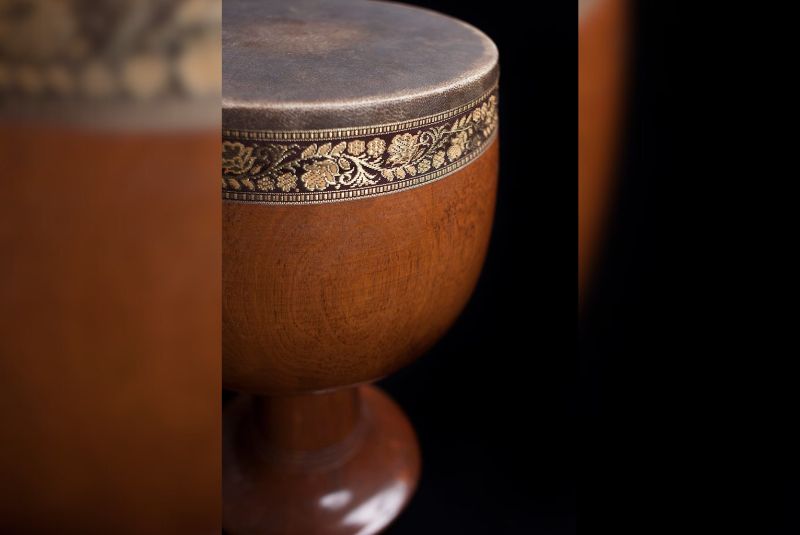
The Tombak is a traditional Persian drum, with origins predating Islam. Its wooden body provides a rich, deep sound, and it’s often used in various music genres. The Tombak's unique structure allows for a range of tones, making it a versatile percussion instrument.
12. Santur (سنتور)

Last but not least is the Santur, a trapezoidal hammered dulcimer. Played with wooden mallets, it produces a bright, melodic sound. The Santur is an essential part of Persian classical music and is associated with master players like Payvar and Moshtaqian.
Isfahan Music Museum Location and Access
The Isfahan Music Museum is located at 74 Mehrdad Street, Mid Tavhid Street, Isfahan. It's an inviting destination for anyone interested in exploring the rich tapestry of Persian music.
Opening Hours
The museum welcomes guests daily from 9:00 AM to 9:00 PM, except on national holidays. Be sure to plan your visit before 7:30 PM, as that’s the last entry time!
How to Get There
By Public Transport
If you prefer public transport, hop on buses heading from Shahada Square to Gharazi Hospital or Malik Shahr Terminal. Get off at Hakim Nezami Street and enjoy a short walk towards Mehrdad Street to reach the museum.
By Private Vehicle
Driving? Use Pol Felezi as your landmark, then head south on Hakim Nezami Street until you spot Mehrdad Street on your left. It's straightforward and well-signposted!
Isfahan Music Museum Ticket Price
A visit to the Isfahan Music Museum is a delightful experience, especially with live music performances! For Iranian citizens, the ticket price is just 15,000 Toman, while foreign visitors can enjoy the museum for 50,000 Toman.
Tourist Attractions Near the Isfahan Music Museum
If you’re planning to visit the Isfahan music museum, make sure to check out these nearby gems.
1. Palace of Eight Paradises (Kakh-e Hasht Behesht)
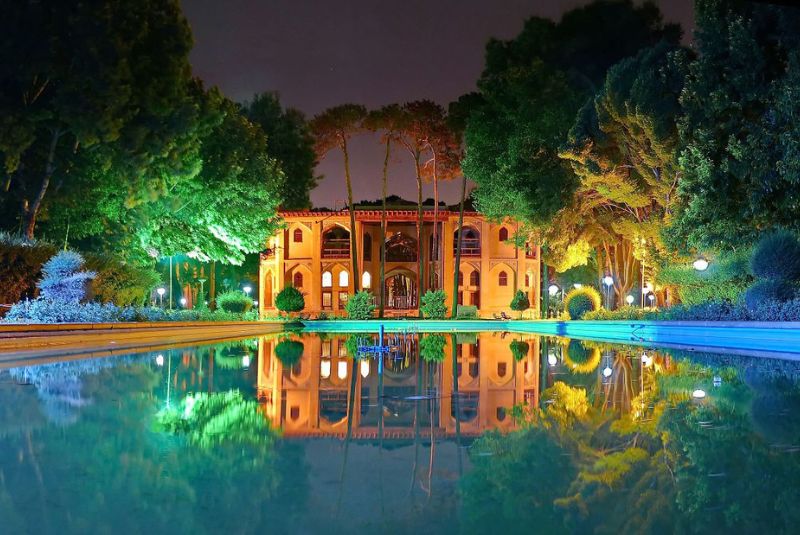
Just a stone’s throw away from the museum, the Palace of Eight Paradises is one of the most beautiful palaces in Iran. Nestled within a lush garden, this two-story structure was completed in 1680 AD during the reign of Shah Soleiman. It’s rumored to have served as a harem for the king’s eight favored concubines, giving it an enchanting backstory.
As you explore, you’ll be mesmerized by the exquisite Isfahan architectural style, adorned with vibrant frescoes, gilding, and intricate mirror work. The palace, a national heritage site, opens its doors daily from 9 AM to 5:30 PM, inviting you to step into a world of historical elegance.
2. Isfahan National Museum of Arts
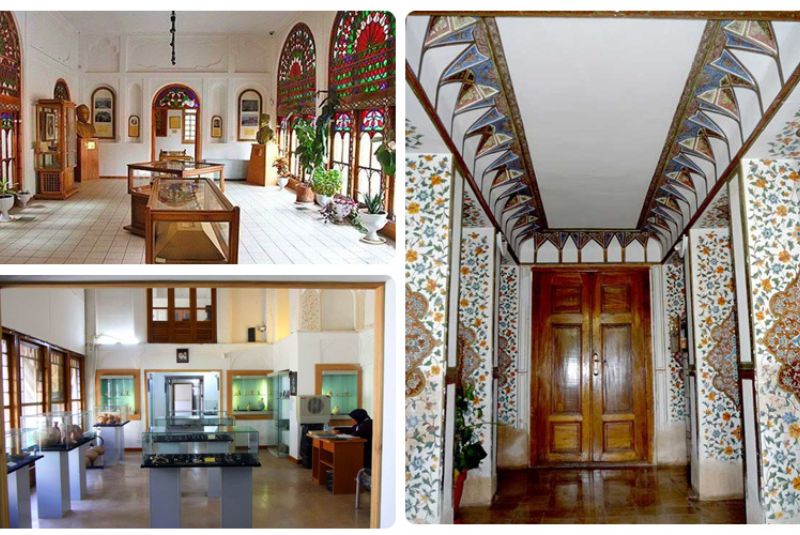
A short walk from the palace, the Isfahan National Museum of Arts is a must-visit for art enthusiasts. Established in 2022 in a beautiful Qajar-era building, the museum houses over 300 artworks showcasing Isfahan’s artistic evolution through the ages.
With six themed pathways, visitors can delve into the history of art from prehistoric times to the present. The museum is open from 9 AM to 5 PM and ensures an immersive experience with its well-curated exhibits.
3. Chehel Sotoun Palace
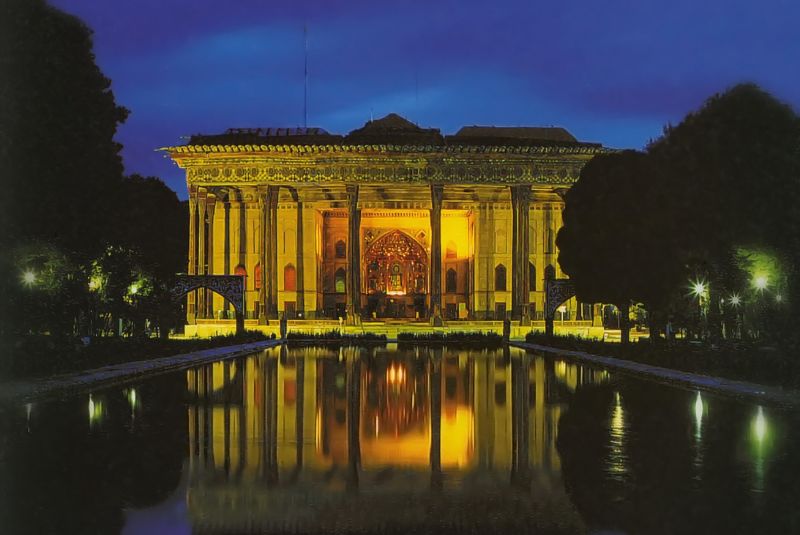
Only about a kilometer away, the Chehel Sotoun Palace is another iconic landmark. Surrounded by beautiful gardens, this UNESCO World Heritage site was built in the 17th century for Shah Abbas II.
The name translates to “Forty Columns,” which refers to the reflection of its twenty wooden columns in the tranquil waters of the surrounding pool. The palace features stunning frescoes that depict royal ceremonies and daily life, making it a perfect spot for history buffs.
4. Isfahan Art Bazaar
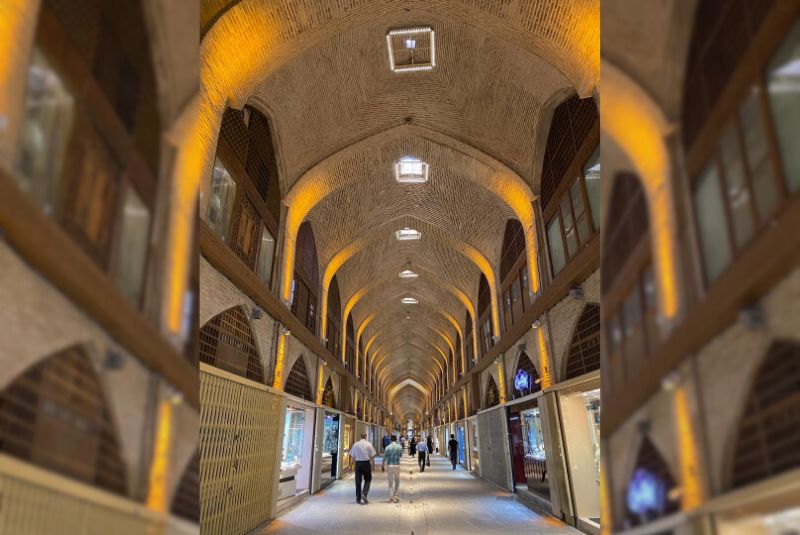
Lastly, don’t miss the vibrant Isfahan Art Bazaar, just a two-minute stroll from the museum. This traditional market is a haven for handcrafted jewelry and exquisite goldwork. As you wander through its lively corridors, you’ll witness local artisans showcasing their intricate designs, offering a perfect blend of cultural immersion and shopping.
Bottom Line
Whether you're a music enthusiast or a curious traveler, the Isfahan Music Museum is a hidden gem that brings the rich sounds of Persian culture to life. From stunning musical instruments to captivating live performances, this museum offers a unique glimpse into the heart of Iran's musical heritage. Plus, with affordable ticket prices and convenient access, it’s a must-visit on your journey through Isfahan!
Share your story!
Comment below and let us know about your Experience.
Your story inspires others!


Comment
Leave a Comment